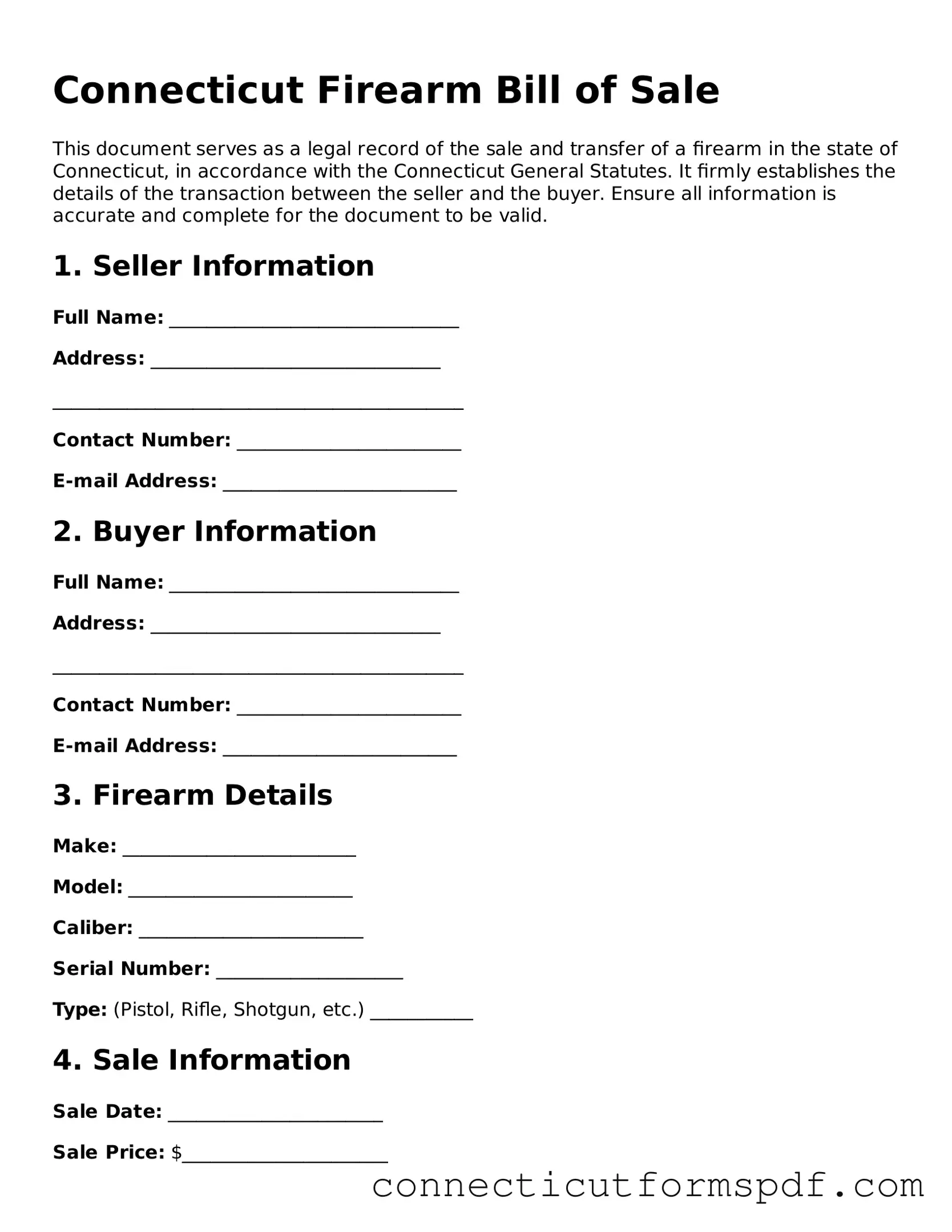Connecticut Firearm Bill of Sale
This document serves as a legal record of the sale and transfer of a firearm in the state of Connecticut, in accordance with the Connecticut General Statutes. It firmly establishes the details of the transaction between the seller and the buyer. Ensure all information is accurate and complete for the document to be valid.
1. Seller Information
Full Name: _______________________________
Address: _______________________________
____________________________________________
Contact Number: ________________________
E-mail Address: _________________________
2. Buyer Information
Full Name: _______________________________
Address: _______________________________
____________________________________________
Contact Number: ________________________
E-mail Address: _________________________
3. Firearm Details
Make: _________________________
Model: ________________________
Caliber: ________________________
Serial Number: ____________________
Type: (Pistol, Rifle, Shotgun, etc.) ___________
4. Sale Information
Sale Date: _______________________
Sale Price: $______________________
5. Seller's Statement
I, the undersigned seller, declare that the above information is true and complete to the best of my knowledge. I confirm that I am legally authorized to sell this firearm and that it is not stolen or involved in any ongoing criminal investigation.
Seller's Signature: ______________________ Date: _______________
6. Buyer's Statement
I, the undersigned buyer, declare that the above information is true and accept the transfer of this firearm under the laws and regulations of the state of Connecticut. I acknowledge and agree that I am responsible for ensuring this firearm is used in a lawful manner and commit to holding all necessary licenses and permits.
Buyer's Signature: ______________________ Date: _______________
Additional Provisions
- The buyer is solely responsible for the firearm’s legality once the bill of sale is signed.
- Both parties agree to follow all federal, state, and local laws governing the sale, transfer, and ownership of firearms.
- This document does not serve as a warranty for the firearm.
Witness (If applicable)
Name: _______________________
Signature: __________________ Date: _______________
